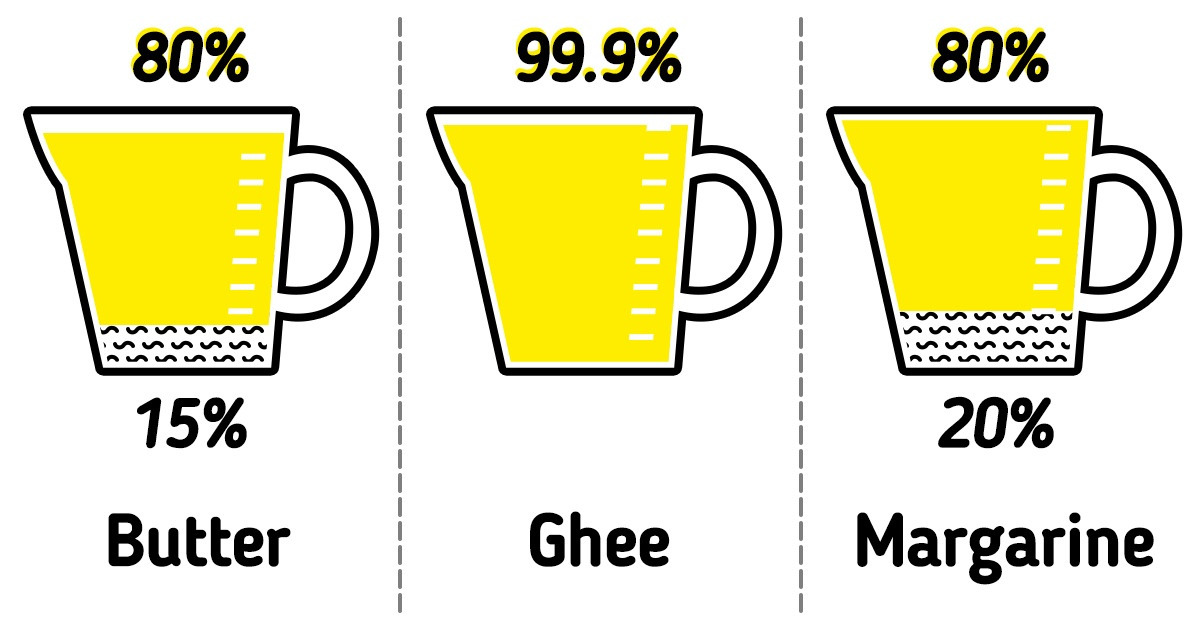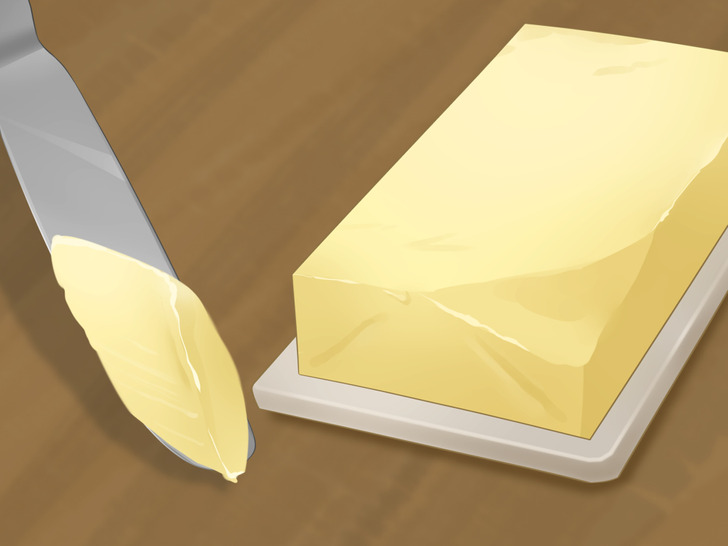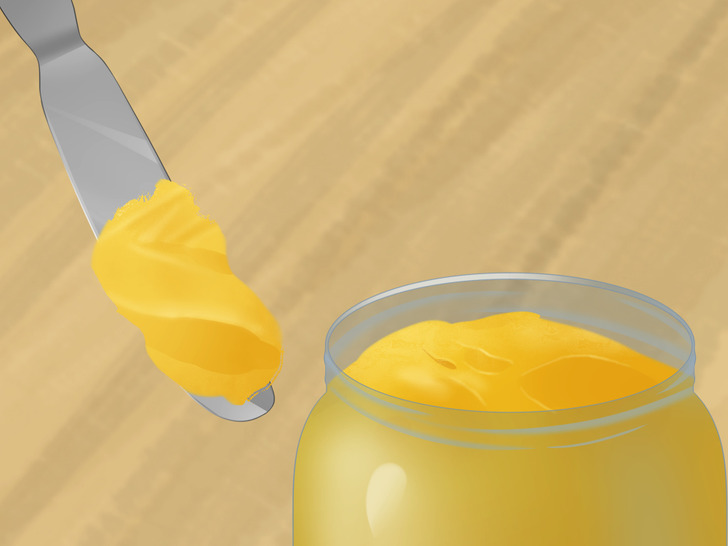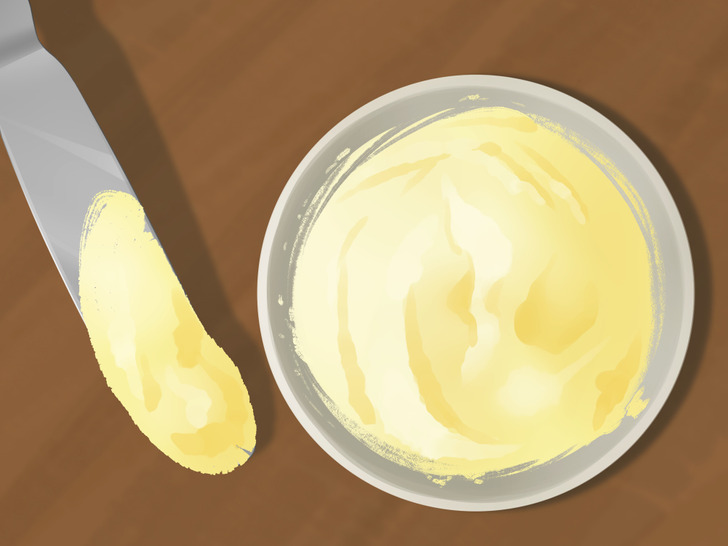The Difference Between Butter, Ghee, and Margarine

Butter, ghee, and margarine are all products we may use and eat every day. But even though they are somewhat similar, in fact, there are quite big differences between them in the way they affect the body.
We at 5-Minute Crafts decided to find out what’s so special about each of these products.
Butter

- Butter is mostly made from cow milk. But sometimes, goat, sheep, yak, and buffalo milk can be used. After churning, there’s some liquid in the butter, while there’s none in ghee.
- When the liquid is churned, the butterfat separates from the buttermilk, making a solid yet spreadable light yellow substance.
- Butter is a healthy product. It contains vitamins A, D, E, calcium, magnesium, phosphorus, and potassium.
- Commercial butter is about 80% butterfat and 15% water; traditionally made butter may have as little as 65% fat and 30% water.
- The melting point of butter is 89°F to 95°F (32°C to 35°C).
- The smoke point of butter is 277°F (163°C). You should be very careful with it if you want to use it to fry something.
Ghee

- Ghee is a traditional dairy product that’s been used around the world for centuries. It can be stored for a very long time, which is quite convenient.
- Ghee is clarified melted butter that you get after removing dairy impurities and salt. The process of making ghee is very natural, so it doesn’t contain any chemical preservatives, additives, or synthetic nutrients.
- Ghee contains a lot of healthy nutrients, including vitamins A and K. It also has many good fats and omega-3 fatty acids.
- Ghee is healthier than butter because it can survive relatively high temperatures.
- Ghee is 99.9% fat.
- The melting point of ghee is 89°F to 95°F (32°С to 35°С).
- The smoke point of ghee is much higher than that of butter at 485°F (252°С). It means it’s great for frying.
Margarine

- Margarine is not an oil-based product.
- It’s typically made of 80% vegetable oil and water and flavored to taste like butter. Anything less is considered a “spread.”
- Margarine is manufactured at high temperatures, as it’s a chemical process. It contains many additives, colorants, and synthetic nutrients to make it look like butter.
- Unlike butter, margarine can’t be stored for a long time, so it usually contains a lot of preservatives.
- Margarine has its advantages: due to its vegetable base, it’s rich in polyunsaturated acids and lowers cholesterol levels. At the same time, it lacks the many nutrients ghee and butter have.
- Don’t forget that margarine, just like ghee and butter, is a very fatty product and may lead to gaining extra weight.
- Margarine is produced at high temperatures, so there’s very little vitamin E in it, and there are some toxins present.
- During the production, all the odors and flavors are removed.
- Margarine was originally developed to replace butter. But because different manufacturers make different products, there are many kinds of margarine.
- The melting point of margarine is 68°F to 86°F (20°C to 30°С).
- The smoke point is 410°F to 430°F (210°C to 221°С).
Share This Article